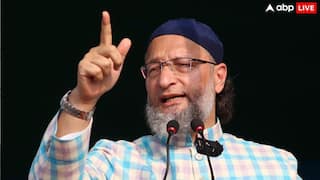Aditya L1 Launch Highlights: Observatory's First Orbit-Raising Manoeuvre To Occur On This Date
Aditya-L1, India’s first space-based solar observatory to study the Sun, was launched today (September 2), at 11:50 am IST, atop a PSLV-XL (Polar Satellite Launch Vehicle) rocket, from Sriharikota.

Background
Aditya-L1, India’s first space-based solar observatory to study the Sun, will be launched today (September 2), at 11:50 am IST, atop a PSLV-XL (Polar Satellite Launch Vehicle) rocket, from Satish Dhawan Space Centre, Sriharikota, Andhra Pradesh. The Indian Space Research Organisation (ISRO) aims to place Aditya-L1 in a halo orbit around a special point in space, known as Lagrange point 1 (L1). It will take Aditya-L1 about 125 days to reach its destination, ISRO Chief S Somanath has said.
L1 is located 1.5 million kilometres from Earth, which is about one per cent of the distance between the Sun and the Earth.
Aditya-L1: Where will it be placed? And why?
Aditya-L1 will be placed in a halo orbit around a Lagrange point because it is a special location in space where the gravitational forces exerted by the Sun and the Earth are balanced, as a result of which an equilibrium condition exists, and the spacecraft is able to save fuel. The speciality of L1 is that it will allow Aditya-L1 to have an uninterrupted view of the Sun for five years, which is the spacecraft’s mission duration.
Aditya-L1: What will the spacecraft’s trajectory be?
After being launched, Aditya-L1 will move towards low-Earth orbit, and be placed into a circular orbit. Next, the spacecraft will undergo an orbit-raising manoeuvre to ensure that its orbit becomes elliptical. Aditya-L1 will undergo three such orbit-raising manoeuvres to ensure that after each perigee burn, the orbit becomes more elliptical.
After this, Aditya-L1 will exit Earth’s sphere of influence and enter the cruise phase. This is a crucial phase because it will place Aditya-L1 on the path leading to halo orbit insertion. Once Aditya-L1 reaches the halo orbit, it will keep hovering around L1 with minimal fuel expenditure.
Aditya-L1: What its payloads are, and what they will do
The spacecraft is equipped with seven payloads, four of which are spectrometers, two are particle analysers, and one is a magnetometer.
The spectrometers are called the remote sensing payloads, and the particle analysers and the magnetometer are called the in-situ payloads.
Aditya-L1 will study solar activities, and also conduct in-situ experiments on the environment around L1.
Aditya-L1: When and how to watch
One can witness the launch of Aditya-L1 live on the official website, YouTube channel, or Facebook account of ISRO, or on DD National. The livestream will start at 11:20 am IST.
Aditya L1 Launch Highlights: Observatory's First Orbit-Raising Manoeuvre To Occur On This Date
Aditya-L1's first orbit-raising manoeuvre will occur on September 3, 2023.
Aditya L1 Live: Till Now Only Earth-Based Observations Have Been Used In India To Study The Sun, Says Senior Engineer At Nehru Planetarium
OP Gupta, a senior engineer at Nehru Planetarium, New Delhi, said after the successful launch of Aditya-L1 that till now, only Earth-based observatories have been used in India to study the Sun. He said there is such an observatory in Udaipur. However, Aditya-L1 marks the first time that a space-based solar observatory will study the Sun.
#WATCH | On the successful launch of Aditya-L1, OP Gupta, Senior Engineer, Nehru Planetarium says, "Till now only earth-based observatories have been used to study the sun in India. There is an observatory in Udaipur. But this is the first time that after sending this mission and… pic.twitter.com/3fG6rWFz8W
— ANI (@ANI) September 2, 2023
Top Headlines





































